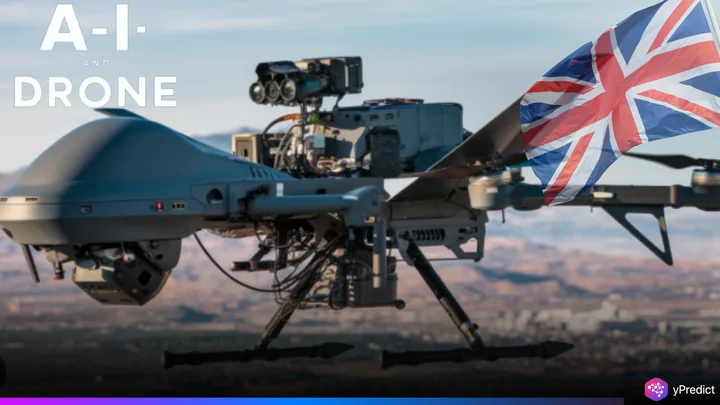
The UK is set to invest more than £1 billion in artificial intelligence and cyber technology to modernise its armed forces. Defence Secretary John Healey made the announcement during a visit to MoD Corsham in Wiltshire, the UK’s main hub for cyber warfare. The funding forms part of a wider defence review aimed at making battlefield decisions faster and more accurately through AI warfare. It follows over 90,000 cyberattacks in the last two years, many linked to Russia and China. Calling it a “historic turning point,” Healey said the investment puts AI at the centre of how the UK will fight future wars.
AI-Powered “Kill Web” to Link Troops, Drones, and Satellites
At the heart of the plan is a system known as the Digital Targeting Web, often called the “kill web.” It’s an AI-powered battlefield network that links soldiers, satellites, drones, and aircraft so data flows instantly between them. A drone could spot a threat, send the image to a fighter jet, and trigger a strike within seconds. That kind of real-time decision-making once took minutes or even hours using older systems.
Drawing lessons from Ukraine’s success with battlefield AI, the UK hopes the kill web helps troops act smarter. “Future wars will be won by those who connect faster,” said Healey. The system should be fully operational by 2027 and will run on military-grade AI developed with national and NATO security partners.
Cyber Command Formed to Fight Back Against Daily Digital Threats
The strategic overhaul also includes the formation of a Cyber and Electromagnetic Command, focused on both defensive and offensive digital operations. General Sir James Hockenhull will lead the unit, in conjunction with GCHQ and the National Cyber Force. The unit’s work will include jamming enemy drones, disabling enemy communications, and conducting cyber operations if and when there is an opportunity to do so.
Officials have commented on an increase in hostile cyber activity in recent years. Malware traced to Russian actors recently targeted UK soldiers returning from foreign deployments. Healey said this shows how warfare is evolving: “The keyboard has become a weapon of war,” he explained. To respond faster, the Ministry of Defence is fast-tracking digital talent through its Cyber Direct Entry programme. The initiative lets skilled civilians skip traditional training and begin cyber defence work immediately.
Can the UK’s Digital Defence Keep Pace with Global Threats?
The UK’s £1 billion AI investment marks a shift from traditional military power to software-led AI warfare and real-time coordination. It positions Britain as NATO’s fastest-adapting force, able to fight digital battles that rely more on code than combat boots. Concerns remain. More than 25% of UK government systems still use outdated software, raising doubts about readiness and resilience.
While AI boosts targeting speed, it also brings moral questions. Who is responsible if an AI system misfires? Healey promises “responsible innovation,” but watchdogs want stronger oversight and clearer rules. The defence sector must now prove it can innovate without losing public trust or ethical footing.
Will AI-Powered Warfare Redefine How Nations Fight?
With AI tools now shaping battlefield outcomes, the UK’s military future looks very different from its past. Decisions will soon be made in milliseconds, supported by data across land, sea, air, space, and cyberspace. As rivals grow bolder and more advanced, the pressure is on Britain to lead with caution and speed. What’s clear is this: the era of algorithm-driven AI warfare is no longer in the future. It’s already here.






